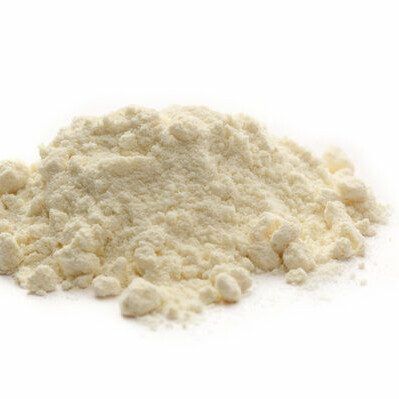
Fortified Flour
What is Fortified Flour?
Fortified flour is a regular flour that contains added micronutrients to improve its nutritional quality. It contains added nutrients that may not occur naturally in the grain.1 This is different from enriched flour, where nutrients that are lost during wheat grain processing are added back.
In baking, fortified flour is used in making breads, cookies, muffins, cupcakes, among others with a higher nutritional value that traditional bakery products.
Traditional wheat flour can be fortified with the following ingredients:2
- Minerals (e.g iron, zinc and calcium)
- Phytochemicals (e.g carotenoids and flavonoids)
- Vitamins (e.g folic acid, niacin, riboflavin, thiamin, vitamin B12 and vitamin B6)
Origin
Fortified flour originates from the need to increase the consumption of minerals and vitamins. Cereal grain constitutes around 50% of the world’s population caloric intake, and thus provides an ideal vehicle to improve micronutrients consumption.2
Flour fortification formally began in 1941 by the introduction of iron and B vitamins to wheat flour. However, since the 1930s discussions were held around the loss of thiamin during the milling process and so baker’s began including voluntarily high levels of vitamins from yeast or synthetic sources. 2
Today, a large percentage of flour consumed worldwide is enriched or fortified with B vitamins and minerals.
Function
Flour fortification is an inexpensive way to increase the consumption of essential vitamins and minerals in the population
Nutrition
A commercially available fortified flour provides the following nutritional value per 100 g:3
| Component | Grams |
|---|---|
| Carbohydrate | 76.3 |
| Water | 11.9 |
| Protein | 10.3 |
| Fat | 0.98 |
| Ash | 0.47 |
*Values may not add up to 100 g
Typical micronutrient content of this flour per pound of flour in comparison with the standard of identity established by the FDA:3
| Micronutrient | Commercial fortified flour (mg) | FDA regulation (mg) |
|---|---|---|
| Thiamin | 3.6 | 2.9 |
| Riboflavin | 2.2 | 1.8 |
| Naicin | 26.8 | 24 |
| Folic Acid | 0.7 | 0.7 |
| Iron, Fe | 21.1 | 20 |
| Calcium, Ca | 1145.5 | 960 |
Fortified flour provides 364 kcal per 100 g.2 The high nutrient content of this flour may aid in the prevention of anaemia and neural tube defects, among other diseases.
Commercial production
The commercial process of fortifying wheat flour involves a final step to traditional wheat conditioning, milling and sizing, where dry mineral and vitamin blends are mixed with the flour. It is then packaged in appropriate materials to maintain the integrity of the added micronutrients and reduce the chances of their degradation.
Application
Fortified flour can be used in the manufacture of a variety of baked goods such as cookies, bread, muffins and cake, without a significant compromise of its organoleptic properties.
Regulations
Fortified flour is considered safe by the FDA which establishes the statement of identity for enriched or fortified flours.4
In the EU, fortified flour doesn’t have a statement of identity. However, EU Commission Regulation No 1925/2006 does establish the vitamins and minerals accepted to be added to food products to enrich or fortify them, and the conditions in which they can be added.5
References
- Figoni, P. How Baking Works: Exploring The Fundamentals Of Baking Science. 2nd ed., John Wiley & Sons, Inc., 2008.
- Bishai, D, and Nalubola,R. “The history of food fortification in the United States: its relevance for current fortification efforts in developing countries.” Economic Development and Cultural Change 51.1 (2002): 37-53.
- U.S. Department of Agriculture, Agricultural Research Service. FoodData Central, 01 April 2019. https://fdc.nal.usda.gov/fdc-app.html#/food-details/169754/nutrients . Accessed 31 October 2021
- Food and Drug Administration (FDA). US Department of Health and Human Services. CFR Code of Federal Regulations Title 21, Part 137 Cereal Flours and Related Products , https://www.accessdata.fda.gov/scripts/cdrh/cfdocs/cfcfr/CFRSearch.cfm?fr=137.165 , Accessed 31 October 2021.
- European Commission (EC). Commission Regulation (EC) No 1925/2006 of 1of 20 December 2006 on the addition of vitamins and minerals and of certain other substances to foods. Official Journal of European Communities, 20 December 2006.

